

Test: Use the Nikon Z6II, an affordable 24 MP full-frame camera, on a microscope – with our LM adapter solutions
Launched in 2020 as the successor to the popular Z6, the Nikon Z6II established itself as a powerful full-frame mirrorless camera for hybrid creators, excelling in both still photography and video production. The camera body retails at an attractive price of around EUR 1,400 (as at 2025). The Z6II features a compact and lightweight design, with the camera body weighing only about 660 g. With our LM microscope adapters with built-in precision optics, it can be attached to a wide range of microscopes.
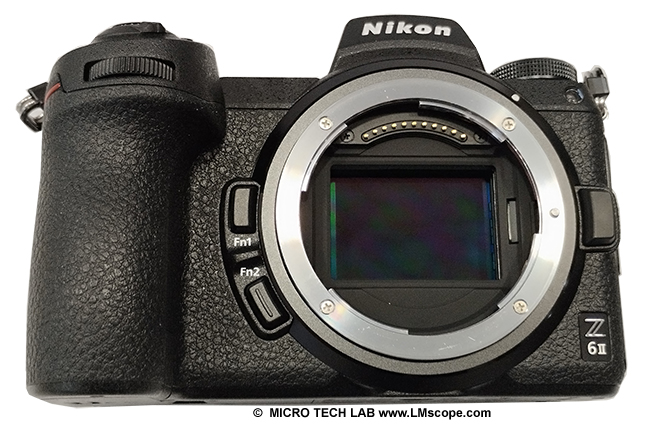
Overview of key camera features:
- 24.5 megapixel BSI CMOS full-frame sensor
- Shutter speed from 1/16,000 to 900 sec with electronic shutter in photo mode
- Continuous shooting at up to14 fps at maximum resolution (4K) with a maximum buffer depth of 200 frames
- ISO range 100 to 51,200 (expandable to 50 to 102,400)
- Video recording in 4K with 6K oversampling, continuous recording time up to 125 minutes
- 4K 60 fps internal RAW video recording, Full HD video with 120 fps for four- to five-time slow-motion recording
- USB 3.2 type C for data transfer, continuous power and charging
- Two memory card slots for SD cards (one for CFexpress Type B cards and one for SDHC/DSXC/UHS I and UHS II cards)
- HDMI Type A interface (clean HDMI) with 4K resolution (3840x2160, 120p)
- Tilting touchscreen LCD screen: 8.0 cm (3.2 inch) TFT colour LCD screen with 2.1 million pixels
- 5-axis in-body image stabilisation
- Lens mount: Nikon Z-mount
At the core of the Z6II’s design is a backlit 24.5-megapixel BSI CMOS full-frame sensor. When put to the test under the microscope, we noted remarkable dynamic range capabilities. The popular online publication DXO (sensor rankings) places the Z6II on par with its significantly pricier sibling, the Z9, and even ahead of the Z8 in terms of performance!
The native ISO range is 100 to 51,200, with an extended range of ISO 50 to 204,800 in Hi2 mode. Thanks to its high-quality sensor, the camera is powerful enough to meet even challenging low-light imaging tasks, such as fluorescence microscopy.
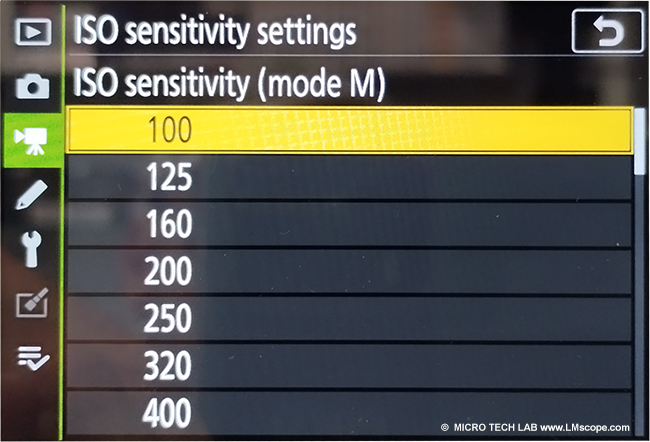
The Z6II features two EXPEED-6 image processors, a significant step up from the Z6’s single processor configuration that effectively doubles the processing power. This contributes to notable advancements across various key performance aspects of the camera, particularly continuous shooting speed (up to 14 frames per second for capturing fast processes) and a larger buffer capacity for longer continuous shooting. The autofocus performance has also been improved over the Z6, which, however, is irrelevant for microscopy, because focussing is done by adjusting the microscope, not the camera.
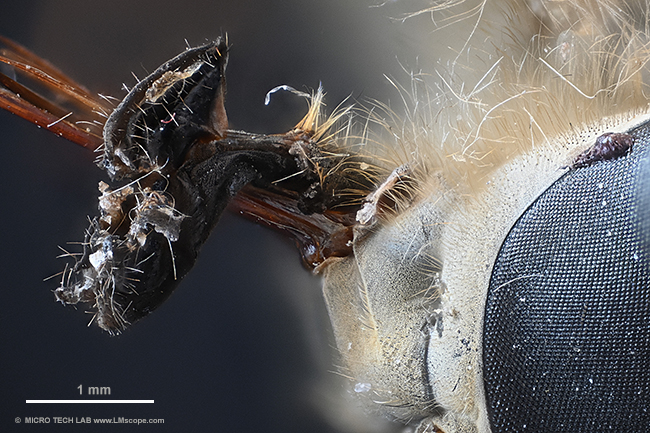
Demo photo: Horsefly. LM photomicroscope with Nikon Z6II, motorised Stackshot focusing rail, Helicon software, image stack with 50 individual images
The video features of the Z6II have also been significantly upgraded from the original Z6. A firmware update added 4K UHD video recording at 60p frame rates, but applying an APS-C crop. The maximum video recording time is 29 minutes and 59 seconds.
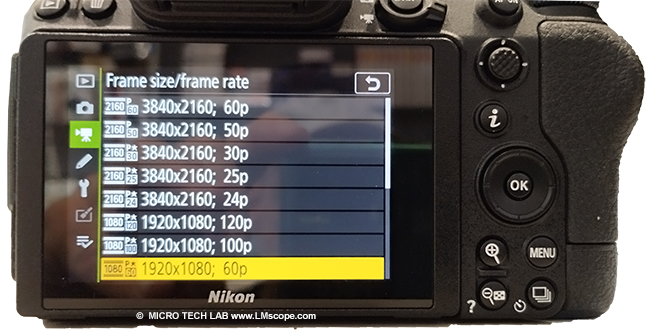
A standout feature in the Z6II’s price range at the time of its launch was the ability to record video at 120 frames per second in Full HD, allowing fast processes to be played back and analysed at a slower speed. This corresponds to slow motion at four or five times the normal speed, same as the slow motion capabilities of the Sony Alpha 7 III. Live View videos and images can be displayed on an external 4K monitor via HDMI port (clear HDMI-A); the maximum resolution is 2160p.
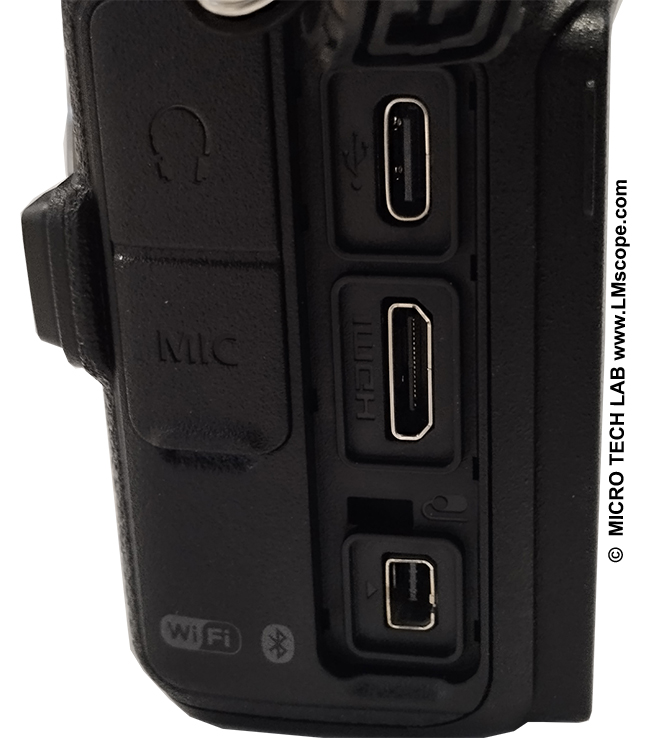
The 3.2-inch (8.0 cm) LCD monitor has a 2.1-dot resolution screen with a tilting mechanism. This adjustable display offers ergonomic benefits for microscope work, allowing for personalised adjustments to fit the user’s needs.
The camera can be attached to either the phototube or the eyepiece tube of the microscope. We offer different adapter solutions depending on the specific microscope used. With our professional adapter solutions, designed with integrated wide-field optics, the camera can capture the largest possible field of view without any peripheral darkening. As a rule, the adapter is focusable, allowing an optical focus alignment of the image observed through the eyepiece with that seen through the phototube. This gets the maximum image quality out of both microscope and camera. Our adapter solutions come with a Z-mount on the camera end and are attached directly to the camera body.
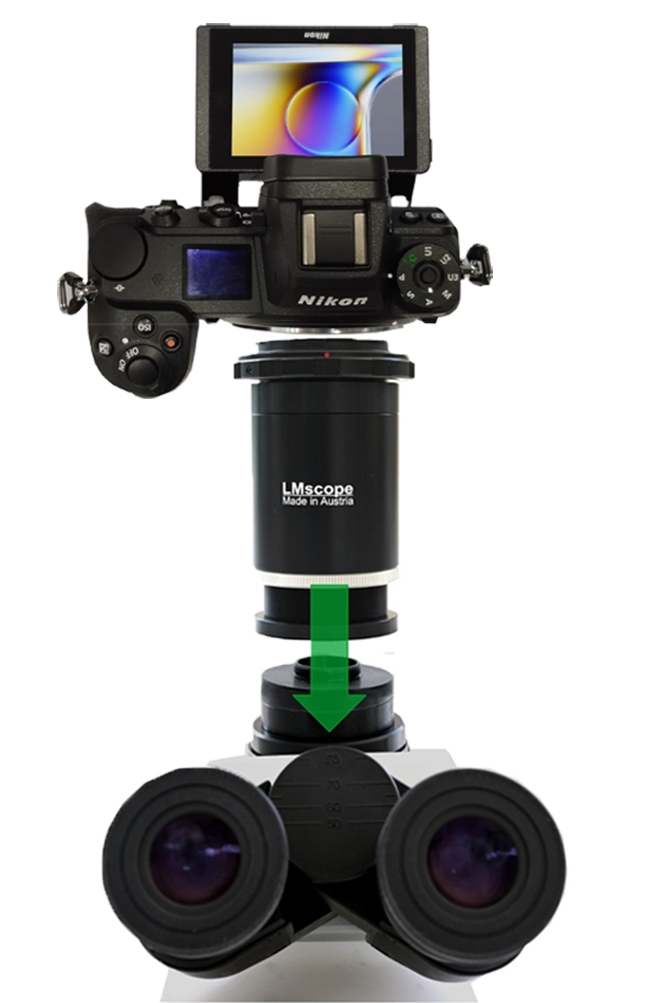
For enhanced ease of use, we suggest controlling the camera remotely through a USB-C 3.0 cable or via Wi-Fi from a PC or tablet. The Live View image can be conveniently viewed on the monitor of the computer, which improves the workflow. The required software or app is available from the camera manufacturer.
The USB-C 3.0 port can be used for transferring data and also for charging the camera’s Lithium-Ion Nikon EN-EL15c battery. Compared to its predecessors, this battery features a significantly larger capacity (2,280 mAh instead of 1,900 mAh), enabling extended usage times. And even more importantly, it allows for the camera to be powered directly through the USB-C cable even while in use.

Conclusion: The Nikon Z6 II is a compact, powerful camera, which can be attached to a wide range of microscopes with our LM microscope adapters in a few simple steps. It offers a good price-performance ratio, and the sensor delivers superior dynamic range and high light sensitivity. In our in-house tests, the Z6 II even surpassed its successor model, the Nikon Z6 III, in terms of dynamic performance.
08.07.2025New LM Digital Adapter for: Sony Alpha 9 III / Nikon Z9 / Nikon Z8 / Sony Alpha 7R V / Sony Alpha 1 II / Sony Alpha 1 / Sony Alpha 9 II (ILCE-9M2) / Sony FX3 Cinema Line / Sony Alpha 9 / Nikon D6 / Canon EOS R3 / Canon EOS R6 Mark II / Canon EOS R8 / Sony Alpha 7R IV / Canon EOS R5 II / Nikon Z6III / Canon EOS R5 / Sony Alpha 7S II / Sony Alpha 7S III / Sony Alpha 7R III / Canon EOS R6 / Nikon Z6 / Nikon Z6II / Sony Alpha 7R II / Nikon Z7 / Nikon Z7II / Canon EOS R / Canon EOS Ra (Astro) / Nikon Z5 / Sony Alpha 7C / Canon EOS RP / Sony Alpha 7S / Canon EOS R7 / Leica SL2-S / Canon EOS R10 / Nikon Z50 II / Canon EOS 1D X Mark III / Nikon Z50 / Nikon Z30 / Nikon Z fc / Nikon D850 / Canon EOS 1D X Mark II / Nikon D780 / Olympus OM-1 / Sony Alpha 7III / Olympus OM-D E-M1 Mark III / Canon EOS R100 / Sony Alpha 6700 / Nikon D5 / Sony Alpha 6600 / Fujifilm X-H2S / Fujifilm X-S10 / Fujifilm X-E4 / Fujifilm X-Pro3 / Olympus OM-D E-M1X / Sony Alpha 6400 / Sony Alpha 6100 / Sony ZV-E10 / Canon EOS 1D X / Nikon D4s / Olympus OM-D E-M5 III / Canon EOS 90D / Canon EOS 5D Mark IV / Nikon D4 / Nikon D750 / Canon EOS 6D Mark II / Fujifilm X-T5 / Fujifilm X-T4 / Fujifilm X-T3 / Sony Alpha 6300 / Sony Alpha 6500 / Nikon D500 / Nikon D810 / Nikon D800 / Canon EOS M6 Mark II / Nikon D800E / Nikon Df / Panasonic Lumix DC-G9 / Nikon D610 / Nikon D600 / Canon EOS 250D / Canon EOS 850D / Rebel T8i / Canon EOS 6D / Sony Alpha 99 II (SLT-A99 II) / Canon EOS M200 / Canon EOS 5DS R ( without low-pass filter) / Olympus OM-D E-M1 Mark II / Canon EOS 80D / Canon EOS M50 Mark II / Canon EOS 5DS / Canon EOS M50 / Sony Alpha 77 II / Canon EOS 70D / Nikon D7200 / Pentax K-1 Mark II / Canon EOS 200D / Canon EOS 800D / Rebel T7i / Canon EOS 77D / Canon EOS 5D Mark III / Canon EOS 60D / Sony Alpha 7R /